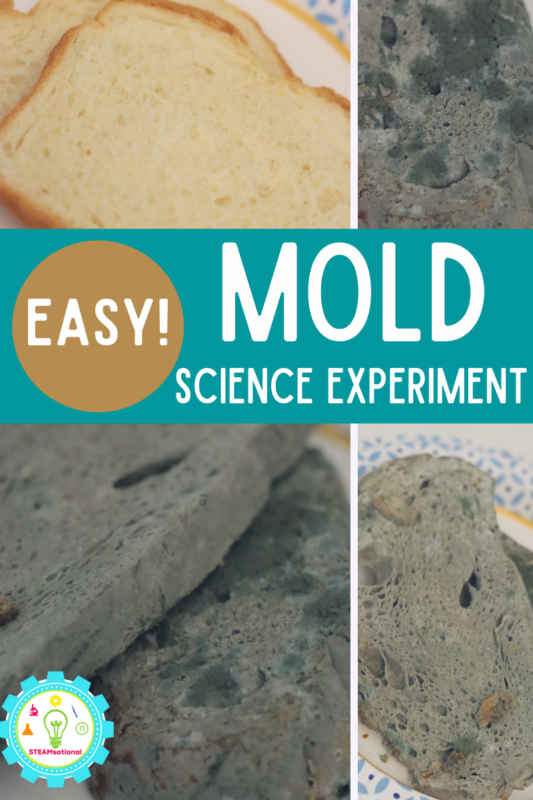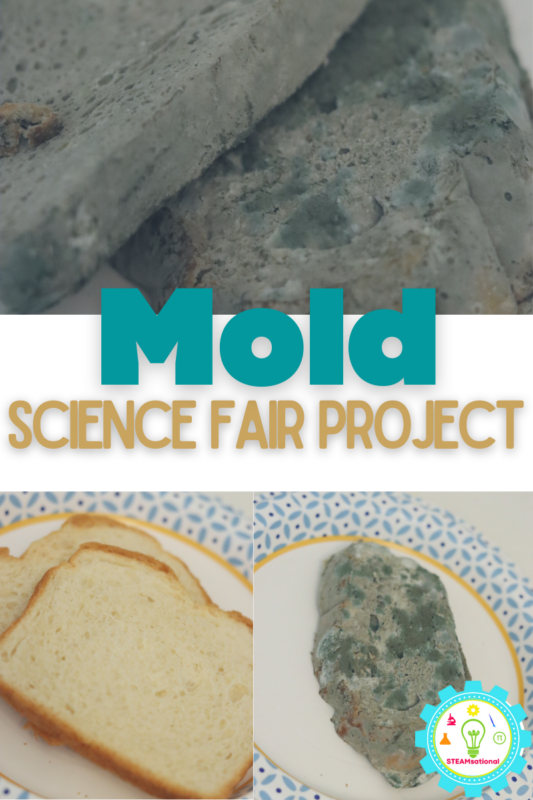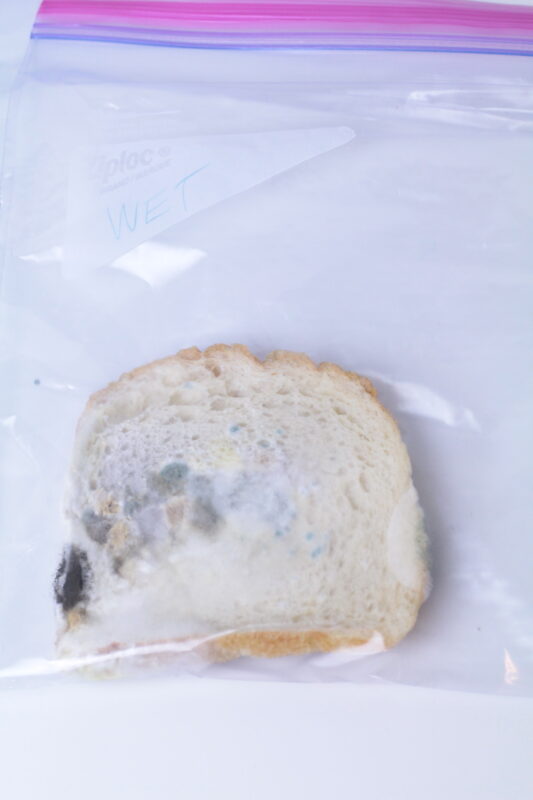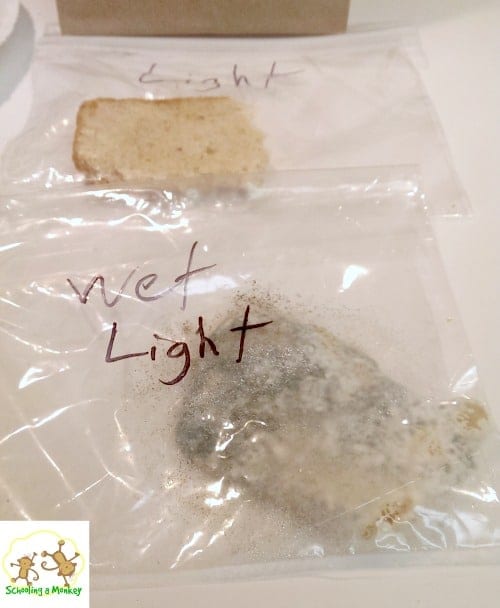We love classic science fair projects, which is why we have always wanted to try the classic bread mold experiment.
Although not as flashy as some of our other classic science fair projects, it was probably more educational than some others.
The students enjoyed seeing how long it took for mold to grow on various forms of bread. There is something really magical about those classic science experiments that have been done for generations! It’s fun to see each new generation learn something new each time they do the experiment.

Classic Bread Mold Experiment for Kids!
Follow along with these instructions to make your own version of the bread mould experiment!
Bread Mold Experiment Hypothesis Ideas
Kids should come up with their own hypothesis for the mold experiment. Have the children create a hypothesis something like this:
- Bread with preservatives will take longer to mold
- Bread in a sunny location will take longer to mold
- Warm bread will mold faster
- Wet bread will mold faster
- Bread will mold faster in the open air than in a plastic bag
Our experiment was simple. We placed bread in various conditions (we had dry dark, dry light, wet, open, and in a closed bag) and Monkey came up with a hypothesis for which piece of bread would mold first.
She predicted it would be the bread we placed in the paper bag in the pantry.
Mold Facts for Science Projects
When doing your bread mold science fair project, here are some fun mold facts for kids to include:
- Mold is a type of fungus.
- Mold grows in the shape or multicellular filaments called hyphae.
- Mold grows from spores that float in the air.
- There are thousands of types of mold, some good and some bad.
- A lot of cheese and antibiotics are created with a mold as a base.
- Mold is usually fuzzy.
- Mold is considered a single organism.

Bread Mold Experiment Materials
- Bread (fresh bread from a bakery will produce much faster results than bread with preservatives)
- Various bags
- A permanent marker to label each piece of bread
What You Need for a Science Fair
You’ll want to have these supplies on hand before doing your science fair project. Shop the included Amazon storefronts to make things easier and don’t forget to download the free science fair planning checklist before getting started!
Science Fair Project Planning
When you’re planning your project, you want to keep everything organized. Click the image below to get my free science fair project checklist so you can start organizing your project from the start.
You may also want to check out this list of science fair project research supplies.
Supplies for a Science Fair Project
There are so many supplies for science fair projects that are individual to each project, but if you want a general list of possible supplies and inspiration for your project, check out my selection of science fair experiment supplies on Amazon.
Supplies for a Science Fair Presentation
Your science fair presentation is important! It should look presentable and eye-catching. Check out this list of my favorite science fair presentation supplies.
Bread Mold Science Fair Project Directions
Divide your bread into as many pieces as you want to test. We used around five pieces.
We only put water on one of our bread pieces, but for the best “scientific” results, you should put water on one piece in a dark place and one in a light place.
In all, we had:
- Bread in a plastic bag in the light
- Bread in a plastic bag in the dark
- Bread in a paper bag in the dark
- Bread on a paper plate with no bag
- Wet bread in a plastic bag
My kids thought the dry bread in the paper bag would mold first.
You can take this project further by measuring how much mold is on each piece of bread after a certain number of days.
We just wanted to see which bread piece would mold first, so we did not do any mold measuring.

Bread Mould Experiment Results
It took about two days for the first mold to show up- which was on the wet piece.
We waited weeks for any mold to show up on any of the other pieces, but it didn’t. This is why we recommend using fresh bread without preservatives.
We finally gave up on waiting for any more mold to grow and threw it out.
The kids were surprised that the wet bread grew mold first, but she thought it was interesting that mold grows faster in damp, warm conditions.
More Science Fair Projects for Kids
20+ Science Fair Projects with LEGOs that are Educational and Fun
Super Fun and Easy Crystal Science Fair Projects


